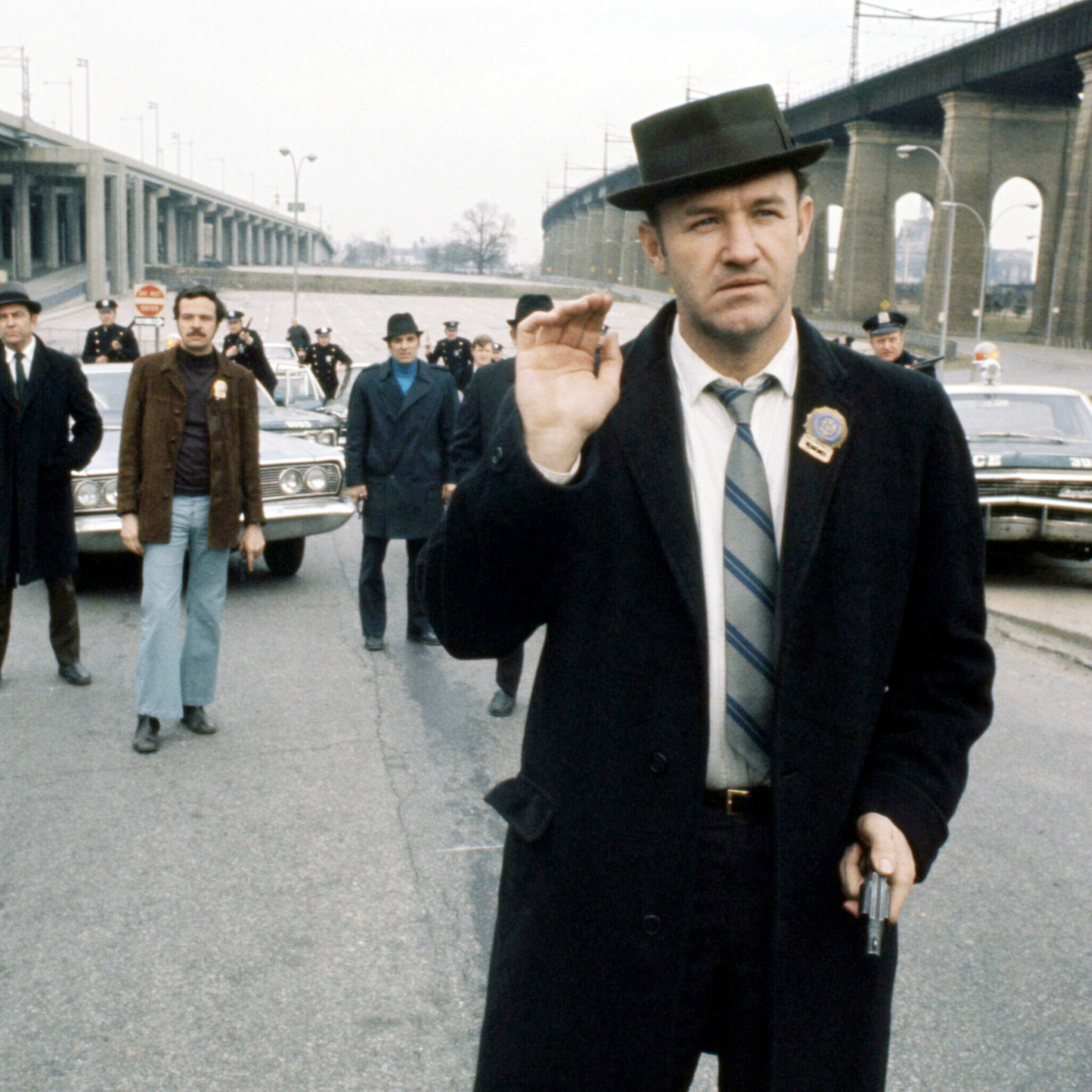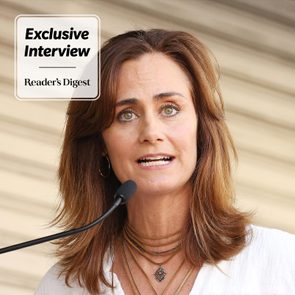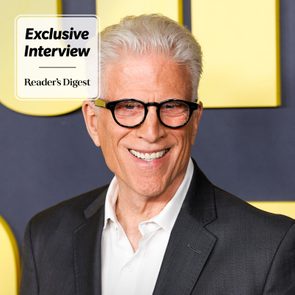For half a century, a single, simple gesture has haunted the actor—and played a part in his greatest roles

How a Single Wave Influenced Gene Hackman’s Entire Life

Editor’s note: Gene Hackman passed away on Feb. 26, 2024. The two-time Oscar winner will forever be known for his iconic portrayals in classic films, including his breakout role as Jimmy “Popeye” Doyle in The French Connection and his role as the criminal mastermind Lex Luthor in Superman: The Movie (1978). The following story was published in the September 1993 edition of Reader’s Digest.
Gene Hackman was just 13 years old the morning his father waved goodbye for the last time. He lived with his parents in his maternal grandmother’s house near the train tracks in Danville, Illinois. His father, Eugene, a pressman for the Commercial-News, wore rough coveralls and had oil grit under his nails.
Gene’s paternal grandfather and favorite uncle Orin, on the other hand, were journalists for the paper—white-collar men who dressed in suits and worked “upstairs” from the dirty presses. That put a lot of pressure on Gene’s father, who was always short of money, and soon tensions flared.
Normally, the boy and his father did things together on Saturday. But on that Saturday, Eugene told his son he had other plans. Gene went off to play in a friend’s front yard. Then something made him look up just as his father’s car was passing. Eugene waved—a quick, offhand flip of a wave—and from that single gesture, the boy knew his father was never coming back.
“OK, it’s all yours,” that wave was saying. “You’re on your own, kiddo.” The year was 1943, exactly half a century ago.
Get Reader’s Digest’s Read Up newsletter for more true stories, fun facts, humor, cleaning, travel and tech all week long.
Stuff of dreams
Saturday after Saturday, for three years after his father left, Gene sat in the Palace Theatre in Danville, daydreaming through the hurt and anger of rejection. He saw himself as the hero in all of Errol Flynn’s World War II movies, and before long he was fantasizing about becoming an actor himself. He could do it, he felt; He just didn’t know how.
Then one afternoon on his way out of the Palace, he peered into the theater’s big gilt mirror and saw not the extraordinary Errol Flynn but a rumpled, potato-faced Gene Hackman. He looked like any ordinary youngster who would grow up to be an ordinary man—clearly not the stuff of stardom—and his daydreams stopped.
Soon, Gene started rebelling against authority—at home, at school, wherever anyone told him what to do. At 16, he lied about his age and joined the Marines, where he was constantly running afoul of officers. Discharged after a lackluster six years, Gene entered college as a journalism major, planning to follow in Uncle Orin’s steps. After six months, though, he dropped out for good. He couldn’t seem to commit to anything.
In both New York and California, Gene tried to be the actor he first dreamed of being back in Danville’s Palace Theatre. In New York, he studied with George Morrison, a fellow Midwesterner who taught the “Method,” a technique in which an actor uses moments from his own experiences to bring a character alive. Suddenly, Hackman found that the very emotions holding him back—mainly his unresolved anger toward his father—could help unlock a role and communicate a character to an audience. All he lacked was total commitment.
Playing for laughs

One evening, when Gene was working as a doorman at a restaurant in Times Square, his old Marine sergeant happened by. Looking Hackman up and down, he detected the same anger and lack of confidence Gene had shown in the Marines.
“Hackman,” the sergeant sneered, “you’re a sorry S.O.B.”
Shortly afterward, Gene went off to Rochester, New York, to visit Uncle Orin, who had taken a job with the Democrat and Chronicle. And there, at long last, he found his role model and father figure. William Orin Hackman, a newsman for 43 years, was also an artist—committed to painting in a way his nephew had never been committed to anything.
A photograph shows Gene, a sad little boy, sitting on a stone wall Uncle Orin and Hackman’s father were building. Gene is sad because they wouldn’t let him help. His father wasn’t gifted with his hands, but Uncle Orin was. “If you have somebody in your family who is artistic,” Hackman says, “it makes it easier for you to step out and do something like that yourself because you know it’s possible.”
Hackman returned to New York, determined to succeed. His first challenge, playing comedy at a Greenwich Village improvisational theater, was rigorous training. The runway stage extending down the middle of the theater divided the audience, so neither side could see both of the comedian’s eyes. And, as Morrison reminded Gene often, there’s an old show-business adage that an audience has to see both eyes to laugh at the punch lines. From the day his father left, Gene had recognized the power of a single gesture. So now, to compensate for the lack of eye contact, he developed a repertoire of gestures that would reinforce what he wanted to convey.
As the young actor honed his skills, he and Uncle Orin traded visits between Rochester and New York. When Gene landed a part in a Broadway comedy, he invited his uncle and 23-year-old cousin Tom to opening night. The play bombed—but Gene received good reviews. In that burgeoning era of Marlon Brando and other common-man actors, he was finally on his way.
Gene’s next stop was the Broadway comedy Any Wednesday. When the play settled into a long run, Gene invited his long-estranged father to see him act. Hackman’s father was still a journeyman pressman, working at one newspaper or another. After the show, neither man brought up the past. They didn’t even talk much about the play. “You look good in a suit,” the elder Hackman said simply. “You should always wear suits.” He seemed to have accepted his son as one of the “suits” in a way he would never be.
Imitation of life
Movie offers followed, and in 1967, Gene landed his first major role, in Bonnie and Clyde. Warren Beatty played the Depression-era bank robber Clyde Barrow; Hackman played his brother, Buck.
Gene’s big scene was Buck’s death, as he was gunned down by lawmen. He thought of Buck as a bull of a man, and he had seen bulls die in the ring. So every night in his motel room, the six-foot-two, 210-pound actor got down on all fours and imitated the motions of a bull critically wounded in the neck. The scene gave the lie to the “glamour” of being an outlaw—while also asserting a common humanity on both sides of the law.
Hackman’s performance won him an Academy Award nomination for best supporting actor. It also dazzled Uncle Orin and cousin Tom. “I never saw anybody die in a movie like that,” Tom would say. You could even see Gene’s heartbeat in the twitching of his fingers as he died.
Now, as his confidence and commitment grew, Hackman was offered one of his most challenging roles—that of another son named Gene, also estranged from his father. In the film version of Robert Anderson’s play I Never Sang for My Father, the son finally learns, at age 40, to face this rejection and get on with his life. For Hackman, the challenge became even greater when he was told that Melvyn Douglas, who played the father, hadn’t wanted him for the part. That only added to the hurt he carried inside, sharpening the edges of his performance.
Hackman chose not to have his character cry on learning of his father’s death—but the grief-stricken slope of his whole body seemed to weep for him. Gilbert Cates, the film’s director, had Gene say his last lines as a voice-over, while the screen shows a photograph of father and son, frozen in gesture. Neither man is smiling, but Hackman’s stance reinforces what Anderson wrote for the soundtrack: “Death ends a life, but it does not end a relationship, which struggles on in the survivor’s mind toward some resolution—which it may never find. What does it matter if I never loved him or he never loved me? But still, when I hear the word father, it matters.”
Final gesture

Hackman knew now that he’d have to confront his real father and raise the subject they had never discussed. Why had he left? Why hadn’t he stopped to say goodbye? Gene drove to Southern California, where his father, now retired, lived in a rundown trailer. When the two were alone, the father flatly refused to talk about his leaving, that final fateful wave, or anything else from those years long ago. Gene had to accept that his own dad, like the father in the film, would never understand what he’d done to his son. He died of a heart attack in 1973.
Gradually growing more at peace with his past, Gene went on to one of his greatest roles, in The French Connection. Playing New York narcotics detective Popeye Doyle, he created a climactic gesture that seemed, in its emotional precision, a long wave goodbye to his struggle to find himself.
At one point in the film, Popeye pursues heroin dealer Alain Charnier into a subway station, then on and off several trains. Finally, Charnier slides into a car just as the doors are closing. As the subway pulls away, Charnier smiles at Popeye through the plate-glass window, smugly waving with one black-gloved hand. But he waves best who waves last. Near the end of the film, the cop and the drug lord are again face to face, and now it is Popeye’s turn to wave. Smirking, he flexes the four fingers of his right hand—as his left points a gun at Charnier.
For his portrayal of Popeye, Hackman—the man Gilbert Cates called “acting’s common man to an uncommon degree”—won the Academy Award for best actor. And for months after the movie premiered, people in Danville gave Popeye’s four-finger salute to cousin Tom.
As film followed film, Hackman’s home life—like his father’s years before—was suffering. In 1956, Gene had married a pretty, dark-haired bank secretary he’d met at a YMCA dance. They had a son and two daughters. Then, in 1982, the couple separated, but Hackman shrank from anything permanent until the children were grown. Three years later, when his youngest child was 18, he filed for divorce.
During that unsettled time, Hackman worked at a frantic pace, making 20 films in the 1980s alone. In July 1990, he suffered an angina attack and underwent an angioplasty. Along with a change in diet, he started relaxing. A year later, he married Betsy Arakawa, a Japanese American pianist.
Between Gene’s acting assignments, Betsy is teaching her husband to play the piano at their Santa Fe, New Mexico, home. And Hackman, like his Uncle Orin, has taken up landscape painting.
But his primary commitment remains with acting and with finding the common humanity in all the characters he plays—even the corrupt ones like attorney Avery Tolar in his latest film, The Firm, and Sheriff “Little Bill” Daggett in Unforgiven, which won him an Academy Award nomination.
Last March, when Gene and Betsy were waiting at their hotel for a car to take them to the Academy Awards ceremony, the phone rang. It. was cousin Tom. “My dad died yesterday,” Tom said softly.
At the awards ceremony, memories came flooding back. There was young Gene on top of that stone wall, watching his father and uncle building together. He remembered his father’s “you’re on your own” wave and knew he’d never be completely alone. Uncle Orin would always be there. Then, before Gene realized it, the awards presenter was tearing open the envelope and announcing the nominees for best supporting actor. “And the Oscar goes to Gene Hackman for Unforgiven!”
He walked to the stage and gave thanks to the key people associated with the film. Then he paused, and with his left thumb, he nervously rubbed the side of the gold-plated statuette in his hand. Slowly he said, “I’d like to dedicate my part of this evening to my uncle, Orin Hackman.” Later, he would reflect on his father’s unintended influence.
“You know, maybe I am an actor because of that gesture of my father’s. Maybe, because it was so precise, it was all I ever needed to understand about acting.”
Why trust us
At Reader’s Digest, we’re committed to producing high-quality content by writers with expertise and experience in their field in consultation with relevant, qualified experts. We rely on reputable primary sources, including government and professional organizations and academic institutions as well as our writers’ personal experiences where appropriate. We verify all facts and data, back them with credible sourcing and revisit them over time to ensure they remain accurate and up to date. Read more about our team, our contributors and our editorial policies.




















